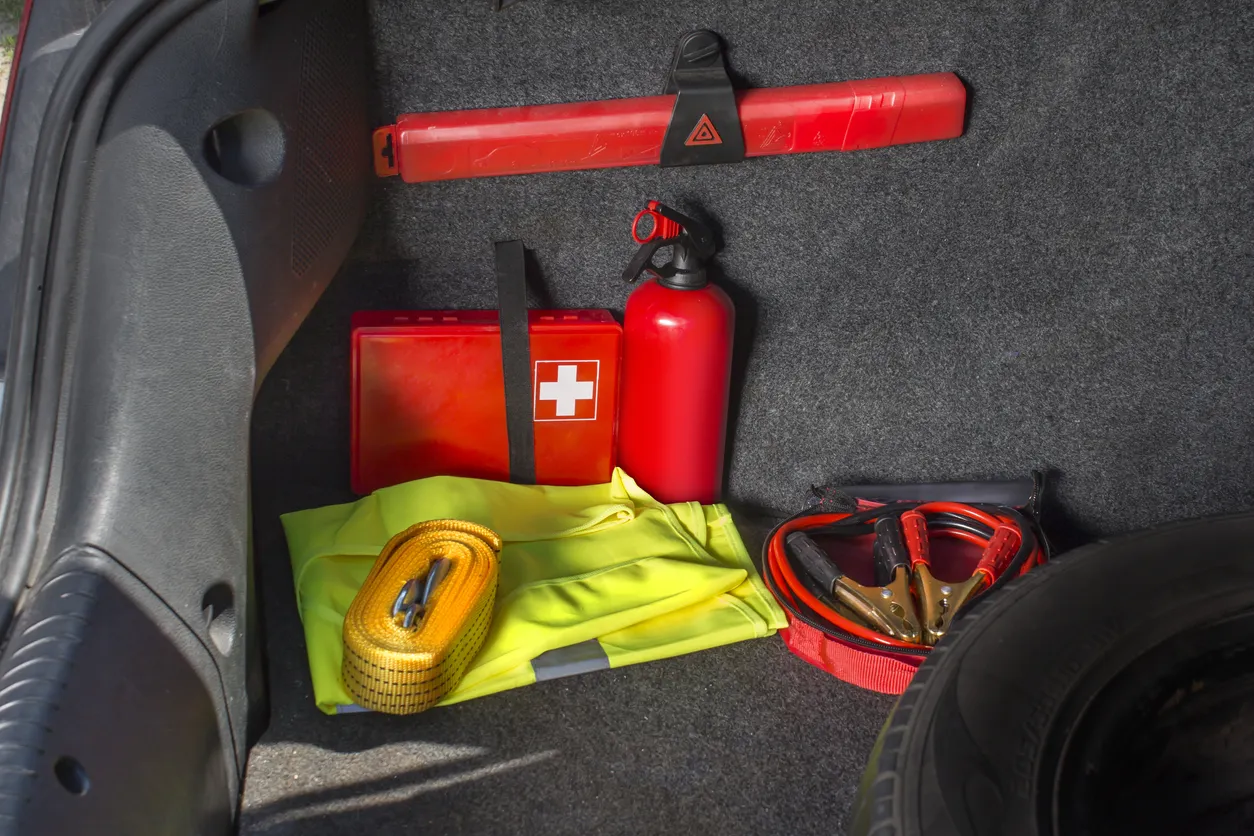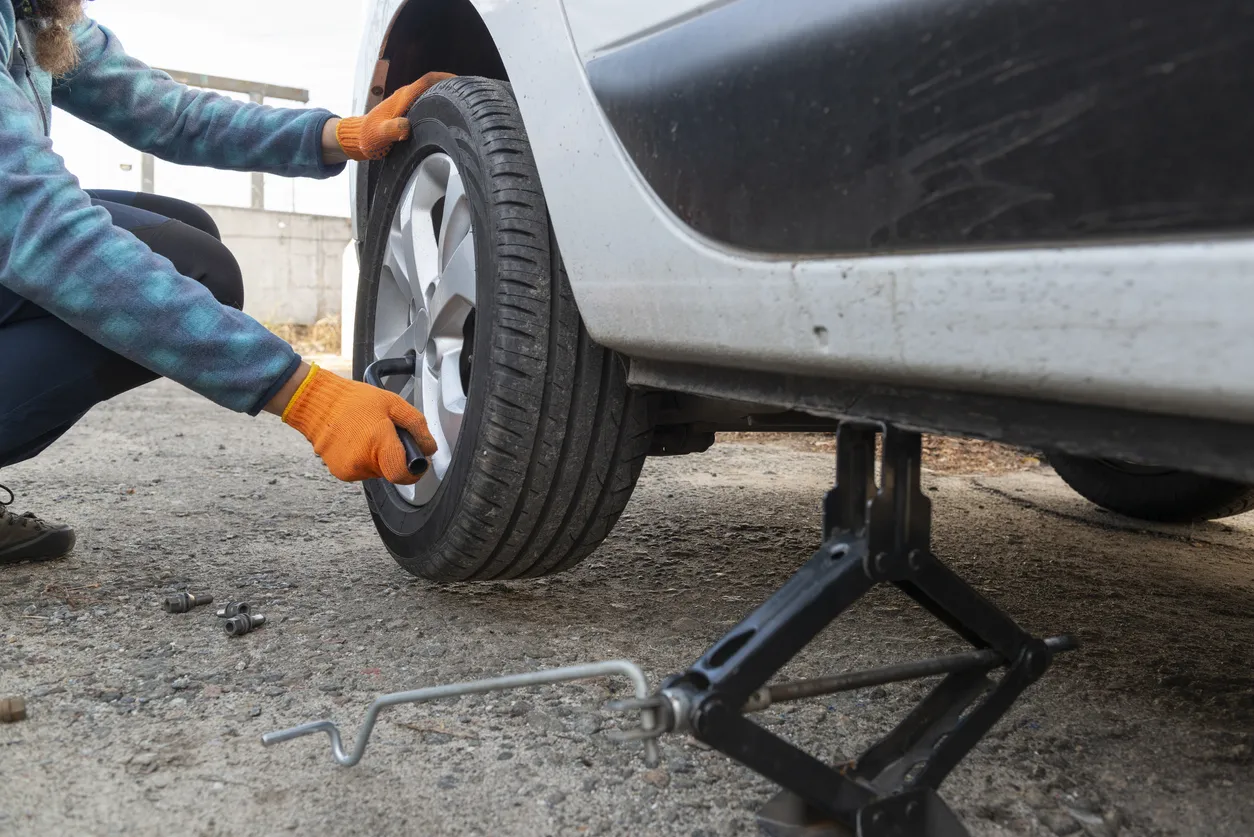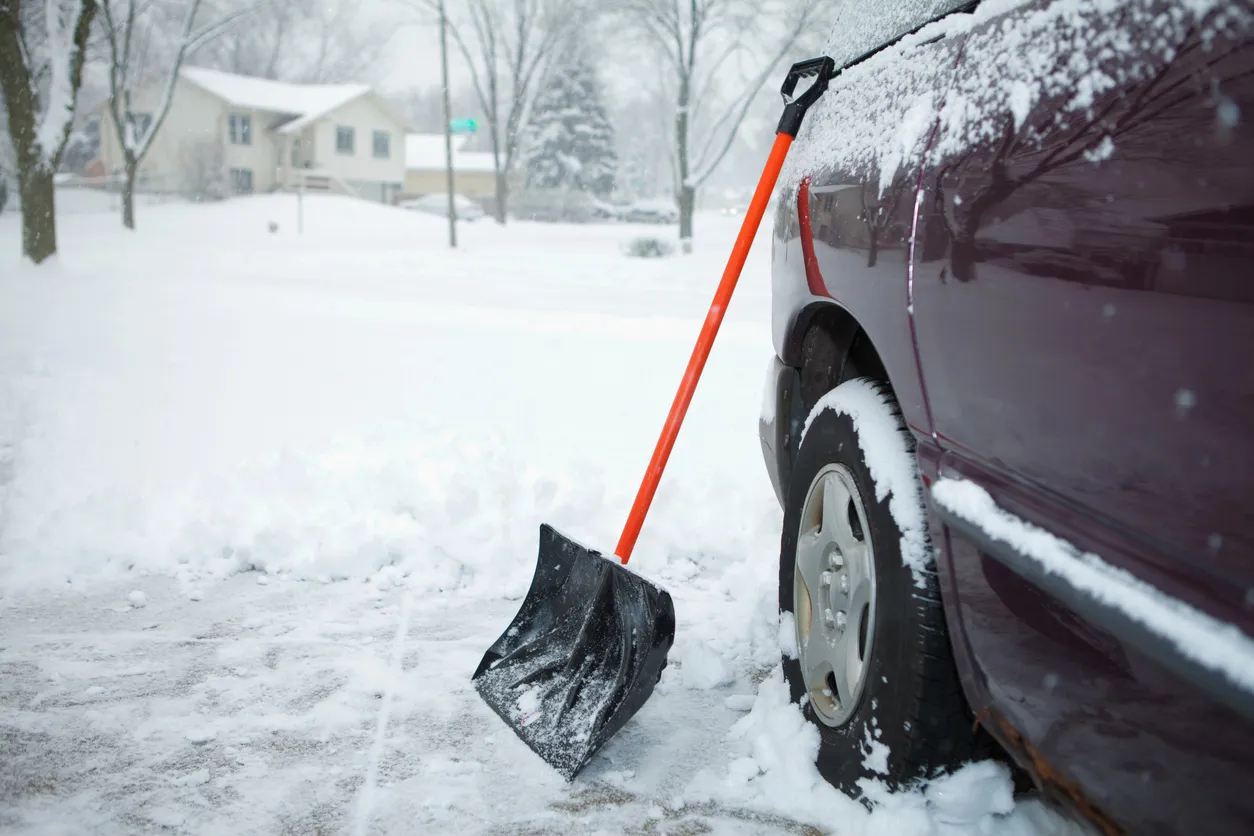- Car Emergency Kit List: Must Have Supplies
- What to Put in a Car Emergency Kit
- Make Your Vehicle Highly Visible to Stay Safe
- Fix Basic Mechanical Issues
- Conduct Short-Term Tire Repair
- Care For Wounds
- Stay Warm
- Stay Fed and Watered While Waiting
- Pay for Food or Repairs
- Extras to Put In a Winter Car Emergency Kit
Car Emergency Kit List: Must Have Supplies

A car emergency kit is a pack of all the tools and supplies that you'll need when facing an emergency with your vehicle. Whether you break down on the side of the road, get into an accident, get stuck in a ditch, or have another issue, a good emergency kit will help you stay prepared for anything. So what are the emergency items to keep in a car? Learn exactly what supplies you should have in your kit so you know what to add to your vehicle to prepare for difficult situations.
What to Put in a Car Emergency Kit
- A Light Source
- Cable Ties
- Duct Tape
- Water and Food
- Jump Starter Power Pack
- Road Flares and Reflective Triangles
- Tire Plugs
- Valve Core Tool
- Replacement Valve Cores
- Fix a Flat
- Air Compressor with Gauge
- Multi-Tool
- First Aid Kit
- A Mini-Safe with a Small Amount of Cash
- Blankets and a Change of Clothes
Make Your Vehicle Highly Visible to Stay Safe
The moment your vehicle breaks down, the first thing you should do is take steps to make sure everyone around you can see you properly. A set of reflective triangles and road flares will help do that for you. By putting out road flares before and after your vehicle, you let everyone know that you're broken down. This is especially important to do at night when you won't be as visible to other drivers. The small reflective triangles give you a way to outline your vehicle and make it easy to see where it starts and stops to everyone else on the road driving around you. When you use these two things, you can make sure your vehicle stands out to other drivers so they avoid you more. This is so important when you break down on a public road, and that's why reflective triangles and road flares are some of the first items you should add to your vehcile emergency kit.
Fix Basic Mechanical Issues
By equipping your emergency kit with little extras such as duct tape, a multi-tool, cable ties, and a light source, you'll give yourself the ability to fix many minor issues you may face while driving down the road. Simple wiring issues, the loss of a cap, or some other basic problem can often be resolved temporarily using zip ties, duct tape, and basic tools found on most multi-tools. Consider adding a multi-tool equipped with a glass breaker into your vehicle to help you get out of a damaged vehicle as well. Adding in these simple tools will make you feel much more prepared, and you'll be ready to tackle problems you face that don't have to do with your vehicle as well.
Conduct Short-Term Tire Repair
Each car emergency kit should have the tools required to perform a basic tire repair. While your vehicle should already have a jack, a spare tire, and a tool to remove lug nuts, you can take things a step further with some little extras. Bringing along a tire plug kit and Fix-A-Flat gives you the power to repair simple punctures and leaks in your tire. You should also consider investing in an affordable valve core tool along with some replacement valves. For the minor investment, you can replace a damaged valve core in seconds, and you'll have a way to rapidly let the air out of a tire if you ever need to. Finally, you should have a small portable air compressor to fill up tires with low pressure and make sure your vehicle is safe to drive. If you puncture one of your tires and make a quick repair on it you'll want to be able to add air to the tire after it's fixed before you start driving. 
Care For Wounds
If you're wondering what to put in a car emergency kit, you should always have medical supplies to treat wounds. Add in a full first-aid kit complete with bandages, a tourniquet, and other medical supplies that will enable you to treat minor and more severe wounds if necessary. A good first aid kit will help you stay prepared for any injuries that occur on your trips.
Stay Warm
A good set of blankets is another useful upgrade to make to your vehicle emergency kit. You can start with compact emergency blankets and ponchos to handle rain and the cold. Consider upgrading to wool blankets later on for added warmth and comfort. If your vehicle breaks down and you are forced to wait, it's good to have a way to stay warm if you need to.
Stay Fed and Watered While Waiting
While you don't need too much food and water, it's a good idea to pack non-perishable food and a few long-lasting containers of water in case of an emergency. If you are stuck in one location for many hours, it's nice to have a snack in your car emergency kit, and you might need the food or water to remain comfortable and healthy if you have to sit in one spot for longer periods.
Pay for Food or Repairs
Another worthwhile item you should consider adding to your vehicle emergency kit is a small safe with some cash. You can also just hide cash in a hard-to-reach location in your vehicle so you have it available. Having cash on hand helps you pay for emergency help, and it's helpful whenever you're at a location that doesn't accept cards.
Extras to Put In a Winter Car Emergency Kit
Along with all the other items you should have in a vehicle emergency kit, you should add the following extras to your kit if you'll be driving in snowy weather. 
Winter Emergency Extras:
- Folding shovel
- Cat litter or sand
- Traction board
While you should already have the blankets you need to stay warm if you break down in the cold, you should have the tools necessary to get yourself out of a snowy situation. Whether you slide off the road, you get stuck in a parking spot after the plow goes by, or you're struggling with snow for another reason, there are a few tools that will help.
Carrying a folding shovel won't take up much space in your vehicle and will give you a quick way to shovel away snow from around your tires to help you get the traction you need if you're stuck. You can pour a bit of cat litter or sand on the snow and improve the traction your vehicle generates immediately. For serious traction needs, you can use a traction board or track device that goes under your tire to help you achieve extra grip and get moving again. These large traction boards will help you get unstuck in most snowy conditions and should keep you mobile no matter where you're driving.
Just like carefully validating a used vehicle you're considering buying with a car history report is a way to protect you and your family, so is building a reliable car emergency kit. Try and obtain most of the items listed above and keep them in a neat package in your vehicle so you have the tools you need no matter what issues you face.
- Car Emergency Kit List: Must Have Supplies
- What to Put in a Car Emergency Kit
- Make Your Vehicle Highly Visible to Stay Safe
- Fix Basic Mechanical Issues
- Conduct Short-Term Tire Repair
- Care For Wounds
- Stay Warm
- Stay Fed and Watered While Waiting
- Pay for Food or Repairs
- Extras to Put In a Winter Car Emergency Kit
FREE Vehicle Search
- Accidents
- Problem Checks
- Title Records
- Recalls
- Values
- Specs
-
InfoPay, Inc. (dba GoodCar) is an Approved NMVTIS Data Provider
-
-












































